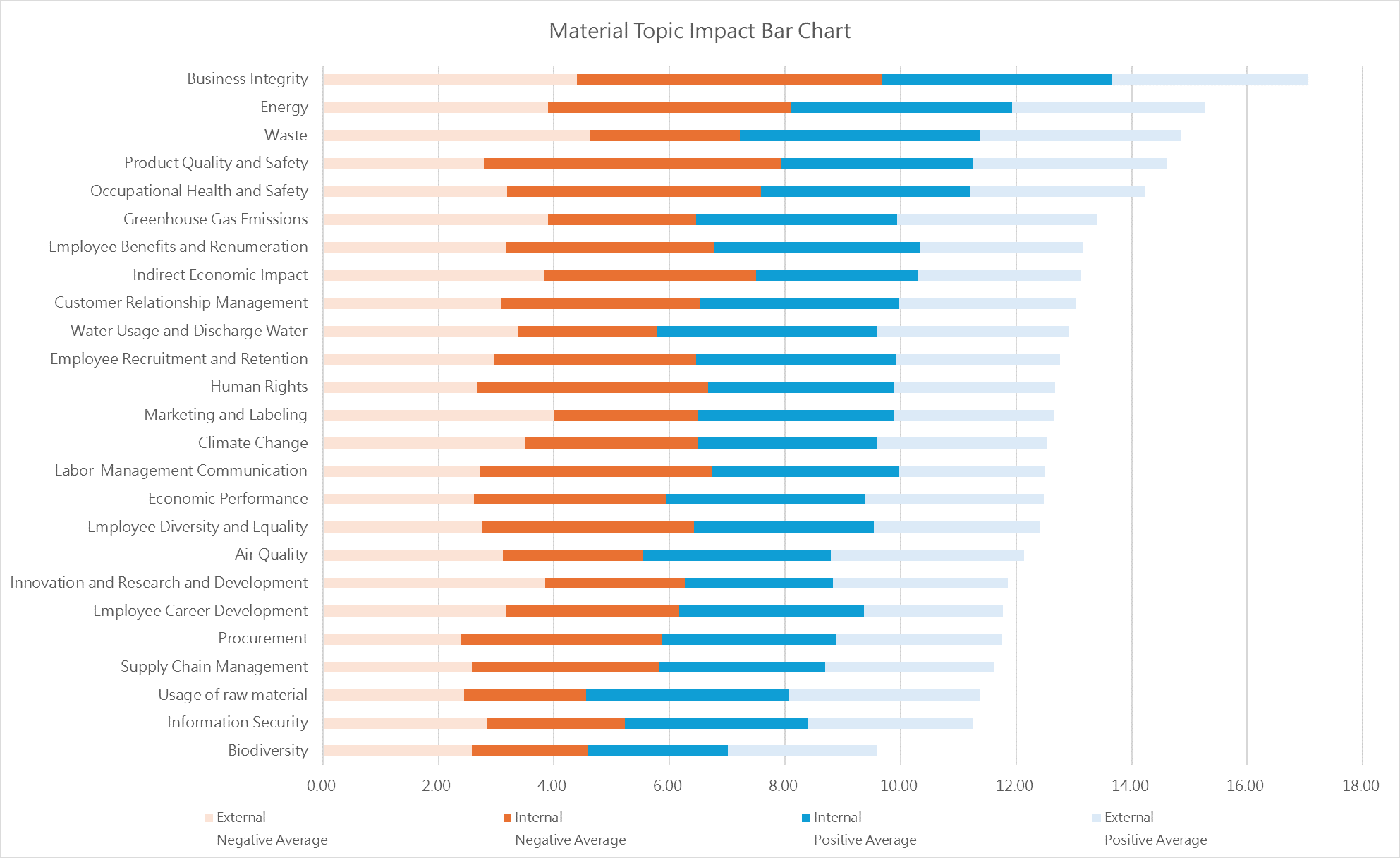1.4.1 Material Topic Assessment Process
Pan-International Group's Sustainability Committee annually evaluates the sustainability issues that significantly impact stakeholders based on the Company's operations, industry type, and the effects generated by the value chain. The evaluation is conducted through stakeholder engagement and consultant advice, in accordance with the materiality, completeness, and stakeholder inclusiveness criteria outlined in GRI 3 of the 2021 version of GRI Standards. The Sustainability Committee then determines the key sustainability issues for the current period. The detailed assessment process is as follows:
Step 1: Identify Key Issues
(1) Summarize industry attributes: Review the business items, models, product or service types, industry classifications, types of workers for each company in the Group, and analyze all the relevant industry attributes associated with the Group.
(2) Identify sustainability issues: In addition to considering significant past events, both positive and negative, the Group also evaluates potential risks or opportunities based on feedback from stakeholder communications, as well as global regulations and standards (GRI Standards, TCFD, and Electrical & Electronic Equipment SASB Standards, etc.). Additionally, the Group reviews industry regulations, standards, and benchmark enterprises within the same industry to comprehensively assess sustainability issues relevant to the Company. A total of 25 sustainability issues were identified during this reporting period.
Step 2: Determine Material Topics
We conduct questionnaires for senior executives, members of the Group's Sustainability Committee, and external stakeholders to comprehensively assess the positive and negative impacts of each sustainability issue. Internal personnel evaluate the impact on company operations, while external stakeholders review the effects on the environment, society, and human rights (people). The evaluation aspects include:
(1) Positive or negative impact: The impact on company operations or stakeholders resulting from the Group’s management strategies and actions on various issues can be classified as positive or negative.
(2) Impact magnitude: Conduct a comprehensive evaluation of factors such as the magnitude of impact on company operations or stakeholders, the probability or frequency of occurrence, the scope of impact, and the ability to remedy any negative effects.
Step 3: Reporting on Material Topics and Information
The Sustainability Committee evaluates relevant international standards for material topics, reviews management policies and objectives of material topics, collects annual data, and ensures the disclosure of key sustainability information of this address respond to stakeholders' concerns. After completing the preparation of the annual sustainability report, the Sustainability Committee reviews the report again and submits it to the Board of Directors for approval, ensuring that all disclosed information is accurate and free of any concerns regarding misrepresentation.
Step 4: Continuous Review
The Company conducts an annual review of the implementation of material topic policies and goal achievement rates annually to optimize internal management approaches and quantitative goals. It also compares the differences in topics before and after the next identification process, investigates the reasons for these differences, and presents the findings in the report.
<< For details, please refer to: The latest version of the ESG Sustainability Report>>

